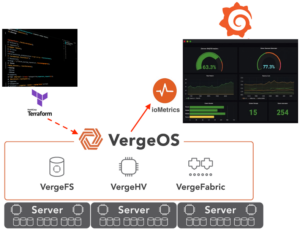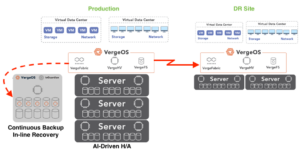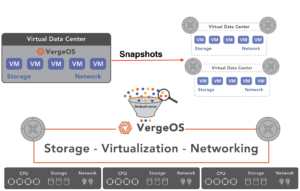As IT budgets tighten, an area to explore is lowering VMware DR costs. The costs to maintain a disaster recovery (DR) process and site add up quickly. Cutting costs, though tempting because it is rarely actually used, may put the organization at risk if a disaster strikes. Fortunately, lowering VMware DR costs does not always have to come with greater risk.
Three Steps to Lowering VMware DR Costs
- Lower the cost of the software license
- Make more efficient use of the hardware
- Expand beyond the DR Use Case
We’ll explain the three steps below and in our upcoming virtual whiteboard session, “VMware Disaster and Ransomware Recovery—The Three NEW Best Practices.“
Lowering VMware DR Software Licensing Costs
The first step is to lower the cost of the software licensing used to replicate and support the remote site infrastructure. Most VMware DR initiatives require a software or hardware solution to replicate the data to the DR site and then a copy of VMware at the DR site to perform testing and host workloads in the event of an actual failure. Reducing the number of solutions the DR process requires and paying less for them without exposing the organization to greater risk will show almost instant savings. These savings increase significantly if the potential solution can run on existing hardware.
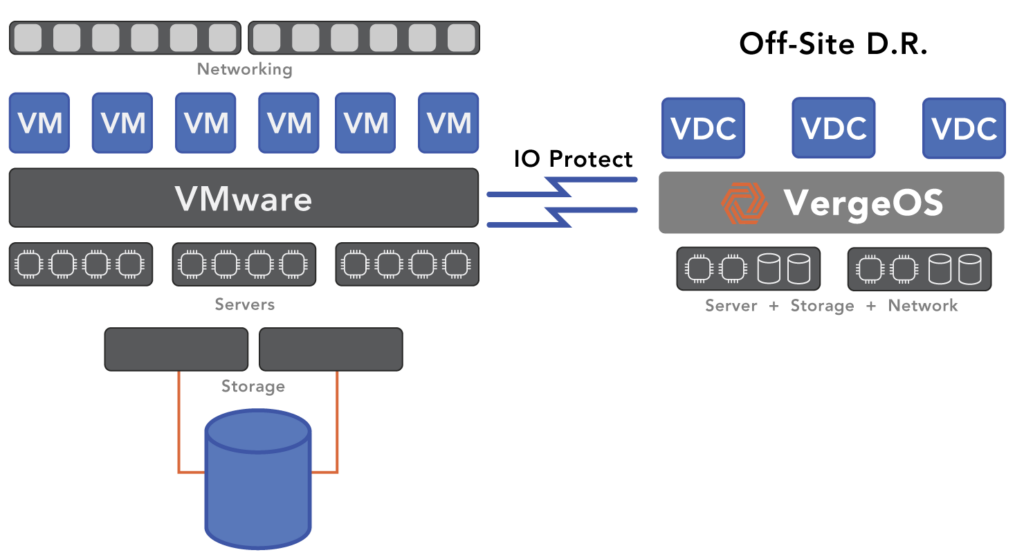
VergeIO’s IOprotect is easy to install and seamlessly protects your VMware environment from a disaster or ransomware attack. It typically costs 60% less than the equivalent software from VMware or a third party. There is also just one software package to buy. IOprotect does not require a VMware license at the DR site. Finally, IOprotect runs on your existing hardware, so in most cases, there is no additional hardware to purchase.
The result is a rapid return on investment (ROI). Most customers can install VergeOS onto hardware they already own and begin replicating data from their VMware site in a couple of hours. The time for payback starts immediately, and the investment cost is returned in weeks rather than years.
Make More Efficient Use of Hardware
Because of cost reasons, most organizations have to designate a “select few” workloads for inclusion into the DR process. Each workload they add increases the software licensing and physical hardware requirements at the DR site. In some cases, the storage solution at the DR site will require more capacity, which also means an increase in capacity-based storage licensing. Lowering VMware DR entry costs enable IT to protect more workloads and amortize the investment. Efficiency also extends the life of the hardware, further lowering costs.
IOprotect is integrated into VergeOS, a highly optimized ultraconverged infrastructure (UCI) solution. Thanks to its efficiency, the hardware has more resources available, and customers can add additional workloads to the DR process with minimal or no additional cost. VergeOS also includes global inline deduplication, so adding additional workloads does not significantly increase DR site storage requirements. Sometimes, even with the additional workloads, customers can decommission hardware or repurpose it elsewhere in the organization.
Don’t Use The Cloud for Lowering VMware DR Costs
Companies that look to lower VMware costs inevitably look to cloud options. The options often appeal because there are no upfront hardware costs. The problem is that paying monthly for the servers and storage that DR requires adds up quickly. IOprotect, because it uses existing hardware, is a more cost-effective solution, both upfront and especially long-term. With it, you use the hardware you have already paid for, so there is no monthly surprise. Even if you can provision servers on the fly, the storage must be paid for each month.
Lowering VMware DR Costs with More Use Cases
What if you could make your DR process do more? If the software driving that process is efficient, you can do more with the DR process without buying more hardware. The software also has to have the capability to support whatever you define as “more.” Because of the low cost and efficiency of IOprotect, many customers will create an on-premises DR solution using spare servers in addition to the remote DR solution. An on-premises DR solution enables you to recover quickly from disasters that are not site-wide and not have to fail over to another data center. It is ideal for situations like a storage system failure, a rack failure, or even a ransomware attack.
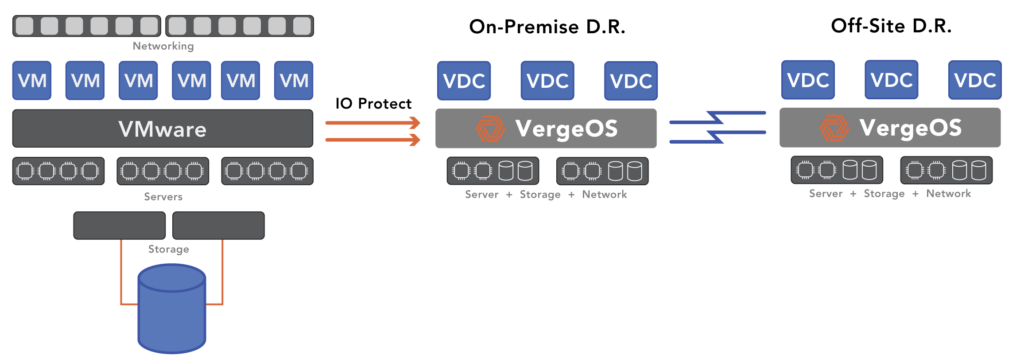
With an on-premises or remote DR solution and efficient software, you can expand out of the DR use case and use the solution for Test-Dev, Quality Assurance, and reporting. Some customers leverage VergeIO’s Virtual Data Center (VDC) technology to create a secure instance of their data center for cyber-response training.
The last use case is migrating your production VMware environment to VergeOS, amplifying the cost savings across both use cases, and completing your VMware Exit.

